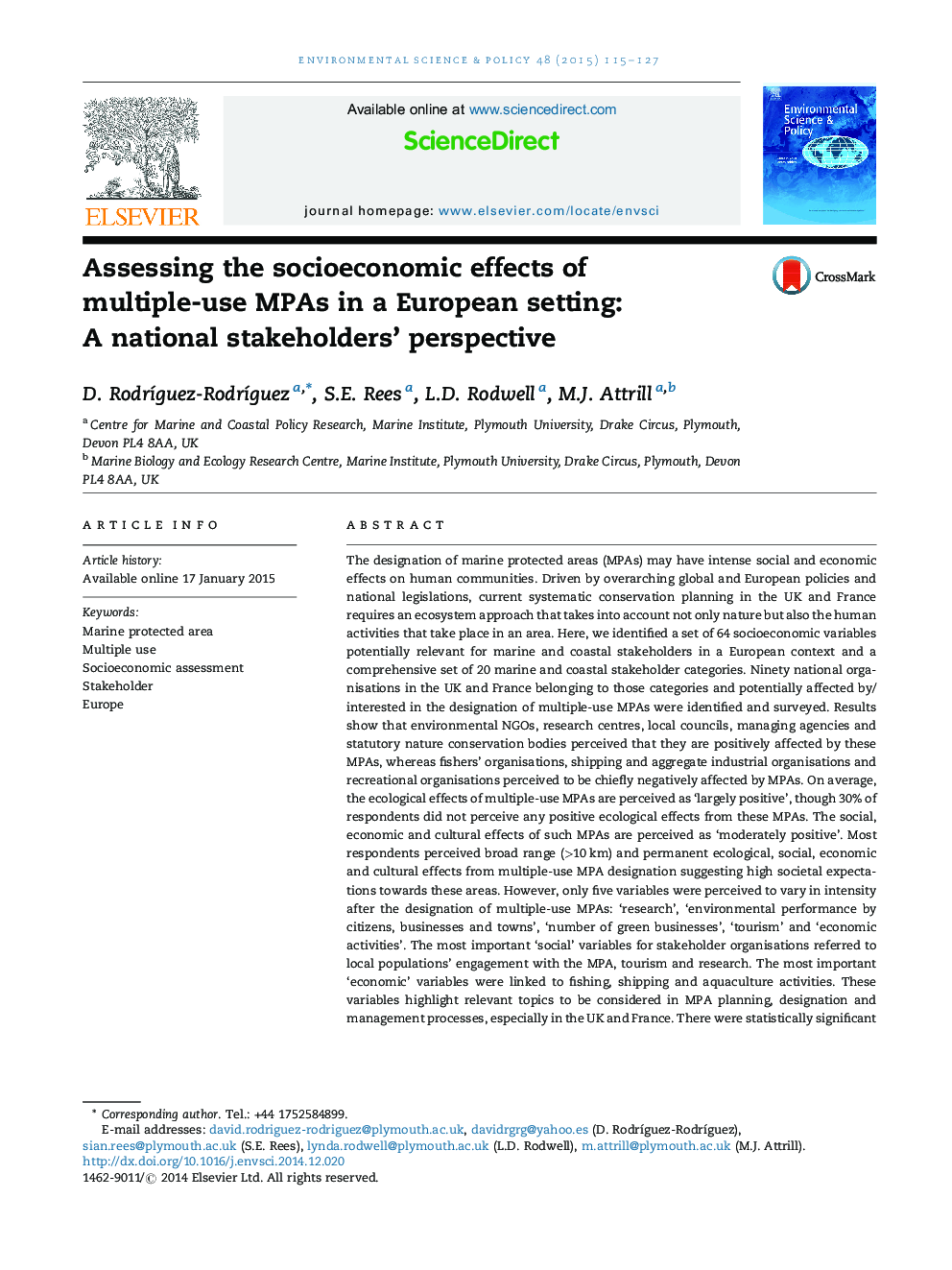| کد مقاله | کد نشریه | سال انتشار | مقاله انگلیسی | نسخه تمام متن |
|---|---|---|---|---|
| 7467511 | 1485058 | 2015 | 13 صفحه PDF | دانلود رایگان |
عنوان انگلیسی مقاله ISI
Assessing the socioeconomic effects of multiple-use MPAs in a European setting: A national stakeholders' perspective
دانلود مقاله + سفارش ترجمه
دانلود مقاله ISI انگلیسی
رایگان برای ایرانیان
کلمات کلیدی
موضوعات مرتبط
مهندسی و علوم پایه
مهندسی انرژی
انرژی های تجدید پذیر، توسعه پایدار و محیط زیست
پیش نمایش صفحه اول مقاله

چکیده انگلیسی
The designation of marine protected areas (MPAs) may have intense social and economic effects on human communities. Driven by overarching global and European policies and national legislations, current systematic conservation planning in the UK and France requires an ecosystem approach that takes into account not only nature but also the human activities that take place in an area. Here, we identified a set of 64 socioeconomic variables potentially relevant for marine and coastal stakeholders in a European context and a comprehensive set of 20 marine and coastal stakeholder categories. Ninety national organisations in the UK and France belonging to those categories and potentially affected by/interested in the designation of multiple-use MPAs were identified and surveyed. Results show that environmental NGOs, research centres, local councils, managing agencies and statutory nature conservation bodies perceived that they are positively affected by these MPAs, whereas fishers' organisations, shipping and aggregate industrial organisations and recreational organisations perceived to be chiefly negatively affected by MPAs. On average, the ecological effects of multiple-use MPAs are perceived as 'largely positive', though 30% of respondents did not perceive any positive ecological effects from these MPAs. The social, economic and cultural effects of such MPAs are perceived as 'moderately positive'. Most respondents perceived broad range (>10Â km) and permanent ecological, social, economic and cultural effects from multiple-use MPA designation suggesting high societal expectations towards these areas. However, only five variables were perceived to vary in intensity after the designation of multiple-use MPAs: 'research', 'environmental performance by citizens, businesses and towns', 'number of green businesses', 'tourism' and 'economic activities'. The most important 'social' variables for stakeholder organisations referred to local populations' engagement with the MPA, tourism and research. The most important 'economic' variables were linked to fishing, shipping and aquaculture activities. These variables highlight relevant topics to be considered in MPA planning, designation and management processes, especially in the UK and France. There were statistically significant differences in the ratings of socioeconomic variables between many organisations belonging to the same intuitive stakeholder categories, suggesting the importance of including as wide a range of stakeholder organisations as feasible in MPA socioeconomic-related processes. Our methods and findings can help to inform and streamline ongoing and future participatory MPA planning, management and monitoring processes in Europe and in other regions with similar socioeconomic characteristics.
ناشر
Database: Elsevier - ScienceDirect (ساینس دایرکت)
Journal: Environmental Science & Policy - Volume 48, April 2015, Pages 115-127
Journal: Environmental Science & Policy - Volume 48, April 2015, Pages 115-127
نویسندگان
D. RodrÃguez-RodrÃguez, S.E. Rees, L.D. Rodwell, M.J. Attrill,